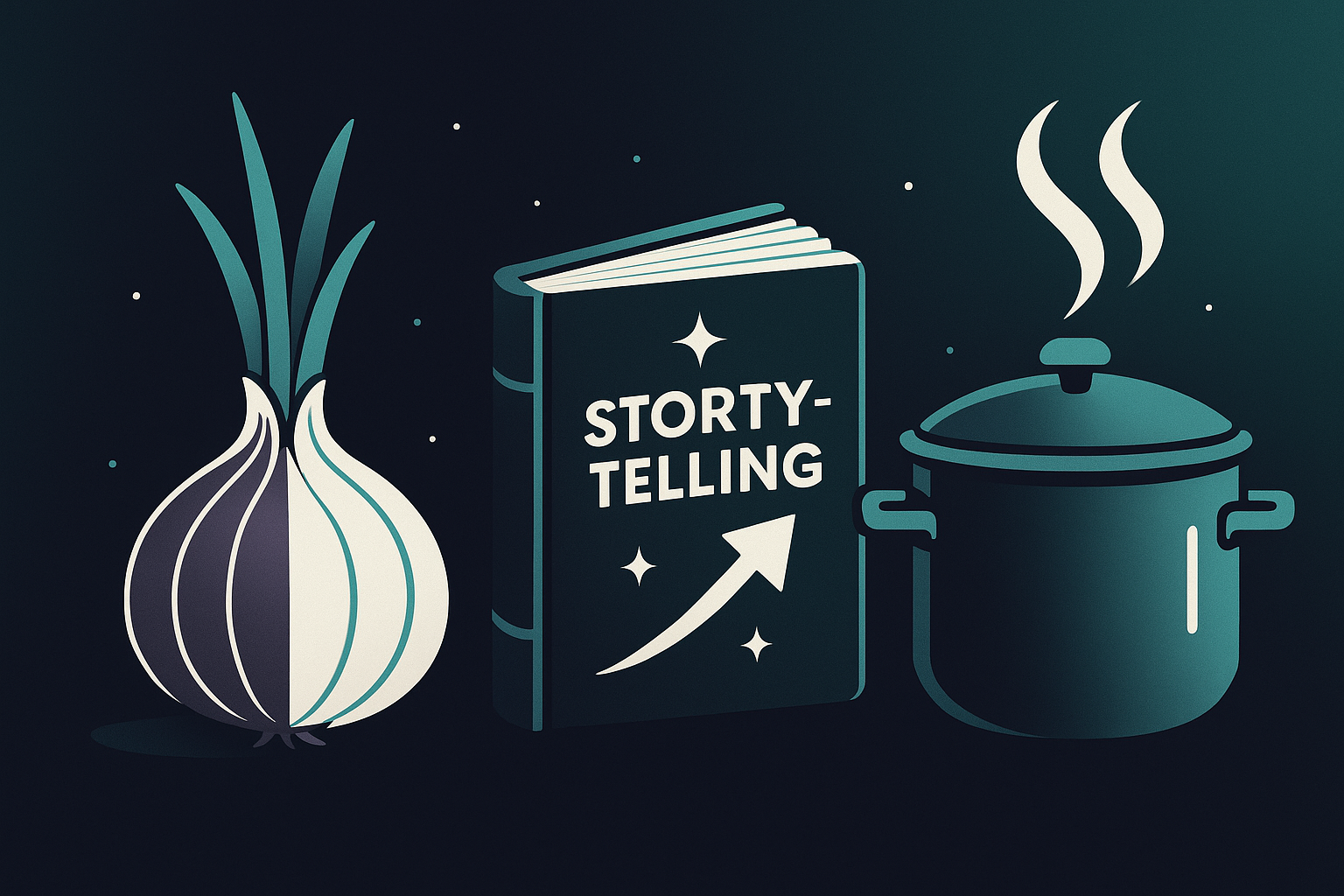Why E-commerce Needs More Onion Boils (Yes, Really)
Let’s talk onions. Not metaphorically—actual onions, simmering and fragrant. If you’re now thinking, “Alastair, have you finally lost the plot?”—bear with me. Because beneath the papery layers of a humble onion boil recipe lies a surprisingly apt playbook for entrepreneurs and marketers navigating AI-powered ecommerce.
The Art of the Slow Simmer
Most startup folks are obsessed with scale: more users, faster launches, higher velocity. But if you’ve ever made an onion boil (and if not, you should—see the recipe above), you’ll know that rushing things only leads to disappointment. Onions need time. The recipe isn’t just about dumping ingredients into a pot and cranking the heat to twelve. It’s about patience, chemistry, and a little faith in the process. (Sound familiar?)
The recipe starts with a basic premise: take onions, water, and a few supporting actors—herbs, spices, fat. Let them hang out. The magic happens not in the first five minutes, but as the flavors meld, sugars caramelize, and what was once sharp and disjointed becomes something new. Think about your last AI project, or that marketing funnel you Frankensteined together. Did it magically work right away? Or did it need a period of low-and-slow refinement?
From Complexity to Clarity: The Onion as Intern
One of my favorite analogies is “AI as intern”—eager, talented, but often in need of supervision. The onion boil is similar. The process is simple, but the outcome is complex. There’s a lesson here for anyone building with AI: don’t expect raw inputs to yield Michelin-star results. The transformation comes from iteration, taste-testing, and—sometimes—starting over when things get funky. (Onions, like AI, can sometimes go off the rails.)
More importantly, the recipe isn’t about flashy technique. It’s about respecting the ingredients, understanding their quirks, and knowing that the best flavors emerge when you let things develop at their own pace. That’s how real transformation happens in both kitchens and boardrooms—through attentive stewardship, not brute force.
Layering Experience: Why Simple Wins
The onion boil recipe is deceptively straightforward. But simplicity is a feature, not a bug. Too often, marketers and founders overload their AI projects with features, integrations, and “synergies” (a word that should come with a health warning). The outcome? A stew of confusion, technical debt, and, usually, lackluster adoption.
Contrast that with the onion boil. Every ingredient has a role. Nothing is wasted. The process is repeatable and adaptable: swap in a new herb, adjust the heat, and you’ve got something both familiar and fresh. This is the mindset we need for building AI-powered experiences—modular, user-centered, and open to evolution. Complexity for its own sake is just raw onion: hard to swallow and likely to make you cry.
Actionable Takeaways for the Podcast Crowd
- Start with clarity, not flash. Whether it’s a recipe or a product launch, know your core ingredients. Avoid the temptation to add features for the sake of it.
- Iterate slowly and deliberately. Good flavors—and good products—take time. Encourage feedback, run small experiments, and don’t fear the “simmer” stage.
- Supervise your AI interns. Automations are great, but human oversight is essential. Taste your results, adjust as needed, and keep your users at the center.
- Embrace adaptability. Like swapping herbs in the onion boil, be ready to tweak your approach. The market shifts, user needs change, and your processes should too.
So next time you’re mapping out an AI-driven funnel or brainstorming your next podcast episode, remember the onion boil. Transformation doesn’t have to be flashy, but it does have to be intentional. And sometimes, the most powerful results emerge from the simplest recipes—if you give them time to cook.
Checkout ProductScope AI’s Studio (and get 200 free studio credits)

